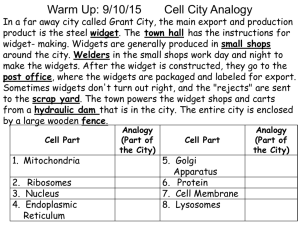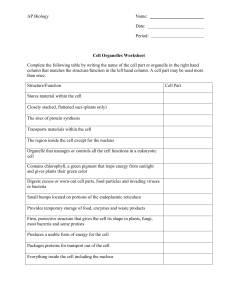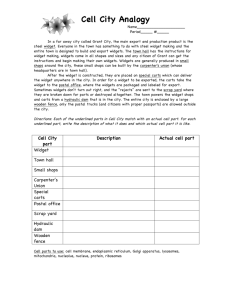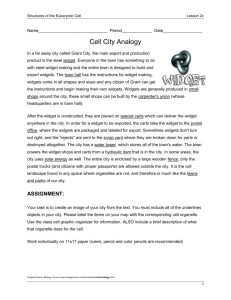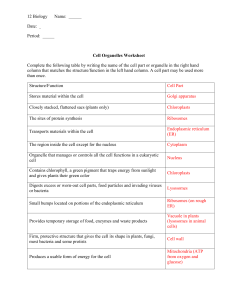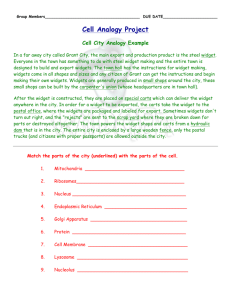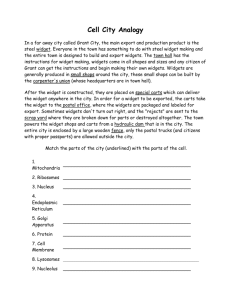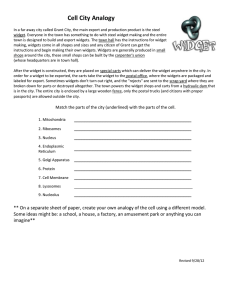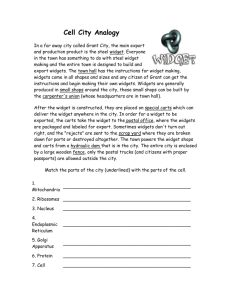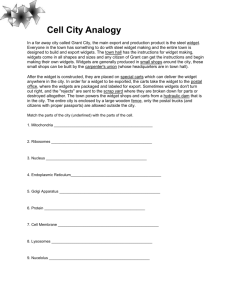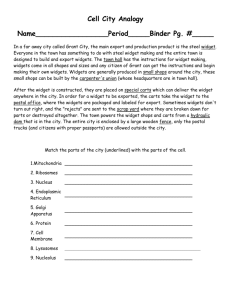Cell City Analogy Worksheet: Organelles & Functions
advertisement
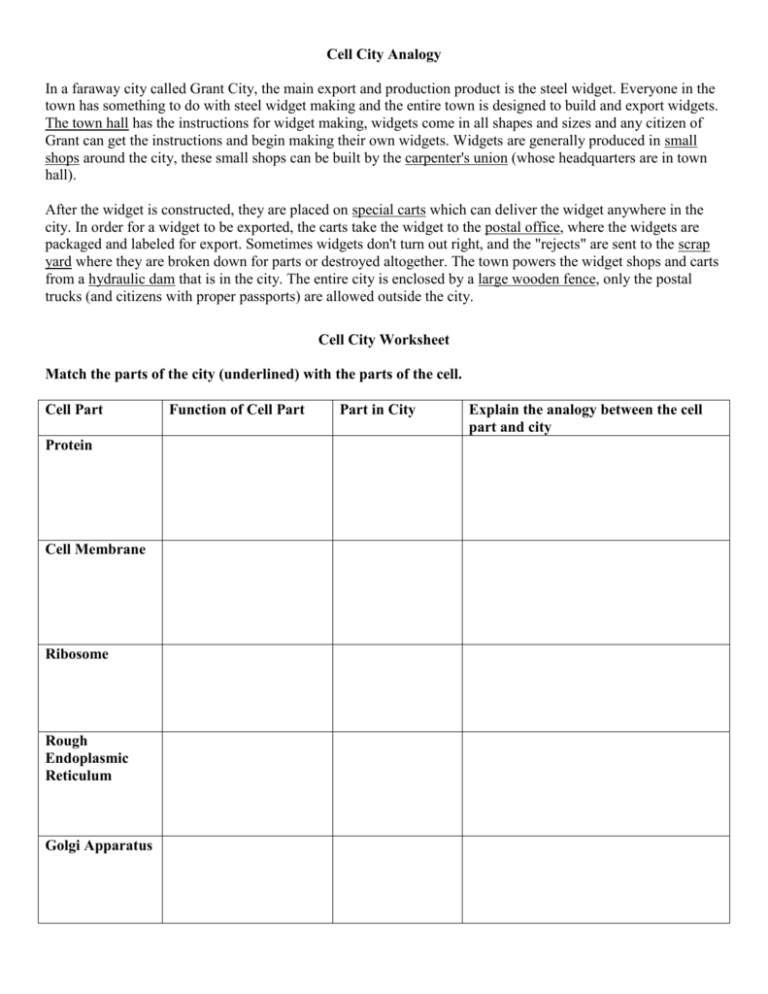
Cell City Analogy In a faraway city called Grant City, the main export and production product is the steel widget. Everyone in the town has something to do with steel widget making and the entire town is designed to build and export widgets. The town hall has the instructions for widget making, widgets come in all shapes and sizes and any citizen of Grant can get the instructions and begin making their own widgets. Widgets are generally produced in small shops around the city, these small shops can be built by the carpenter's union (whose headquarters are in town hall). After the widget is constructed, they are placed on special carts which can deliver the widget anywhere in the city. In order for a widget to be exported, the carts take the widget to the postal office, where the widgets are packaged and labeled for export. Sometimes widgets don't turn out right, and the "rejects" are sent to the scrap yard where they are broken down for parts or destroyed altogether. The town powers the widget shops and carts from a hydraulic dam that is in the city. The entire city is enclosed by a large wooden fence, only the postal trucks (and citizens with proper passports) are allowed outside the city. Cell City Worksheet Match the parts of the city (underlined) with the parts of the cell. Cell Part Protein Cell Membrane Ribosome Rough Endoplasmic Reticulum Golgi Apparatus Function of Cell Part Part in City Explain the analogy between the cell part and city Nucleus Nucleolus Mitochondria ANSWER THE FOLLOWING QUESTIONS FOR HOMEWORK 1. In what organelle does cellular respiration take place? 2. Name two storage organelles? 3. What is the list of organelles that take part in protein synthesis? 4. How is the nucleus involved in protein synthesis? 5. What organelle is considered a “factory”, because it takes in raw materials and converts them to cell products that can be used by the cell? 6. How does the membrane of the cell differ from the nuclear membrane? What advantages does this difference have for the nucleus? 7. What do ribosomes do? Are they found freely floating in the cytoplasm? OR are they found attached to another organelle? OR both. Explain why this occurs. 8. What does the endoplasmic reticulum do? 9. What is the difference between rough ER and smooth ER? What is the ER doing that is different in each case? 10. What are lysosomes? What types of molecules would be found inside a lysosome? 11. Why might a lysosome fuse with or link up with a food vacuole? 12. In what organelle do molecules move from the ER to the Golgi bodies? 13. What is a centriole? In what type of cell (plant or animal) is it found? What does it do for the cell?
